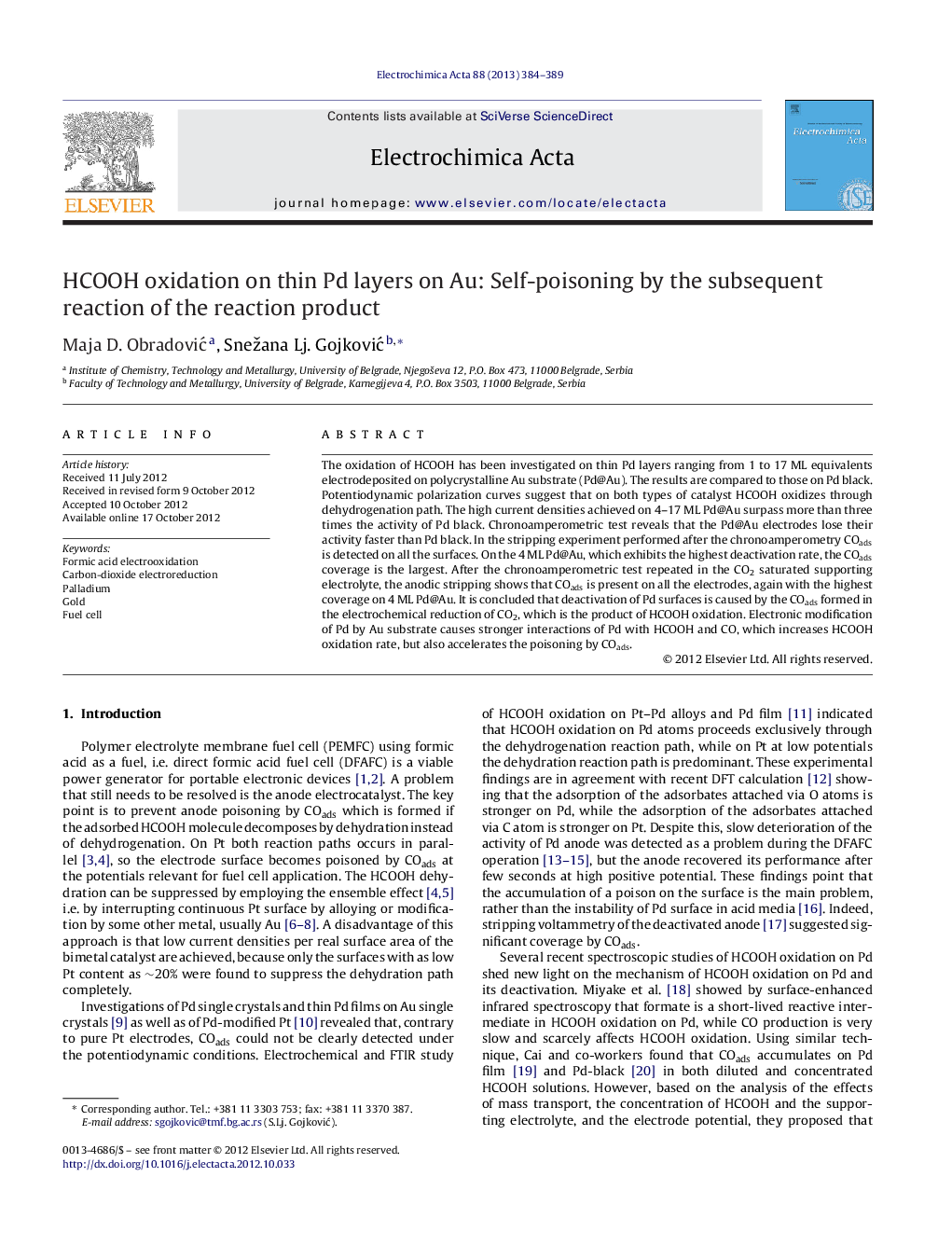| Article ID | Journal | Published Year | Pages | File Type |
|---|---|---|---|---|
| 187715 | Electrochimica Acta | 2013 | 6 Pages |
The oxidation of HCOOH has been investigated on thin Pd layers ranging from 1 to 17 ML equivalents electrodeposited on polycrystalline Au substrate (Pd@Au). The results are compared to those on Pd black. Potentiodynamic polarization curves suggest that on both types of catalyst HCOOH oxidizes through dehydrogenation path. The high current densities achieved on 4–17 ML Pd@Au surpass more than three times the activity of Pd black. Chronoamperometric test reveals that the Pd@Au electrodes lose their activity faster than Pd black. In the stripping experiment performed after the chronoamperometry COads is detected on all the surfaces. On the 4 ML Pd@Au, which exhibits the highest deactivation rate, the COads coverage is the largest. After the chronoamperometric test repeated in the CO2 saturated supporting electrolyte, the anodic stripping shows that COads is present on all the electrodes, again with the highest coverage on 4 ML Pd@Au. It is concluded that deactivation of Pd surfaces is caused by the COads formed in the electrochemical reduction of CO2, which is the product of HCOOH oxidation. Electronic modification of Pd by Au substrate causes stronger interactions of Pd with HCOOH and CO, which increases HCOOH oxidation rate, but also accelerates the poisoning by COads.
► Thin layers of Pd@Au are more active for HCOOH oxidation than pure Pd. ► Pd@Au surfaces are poisoned more rapidly than Pd black. ► Poisoning is caused by COads formed in CO2 electroreduction.
